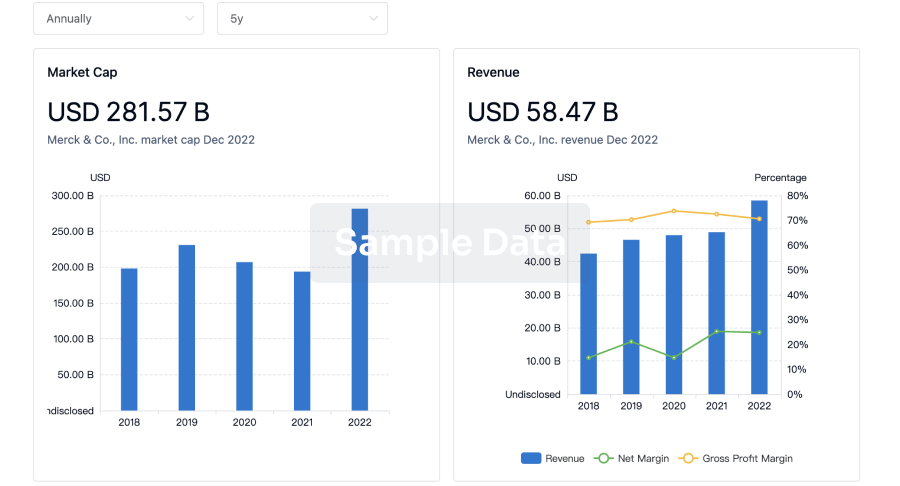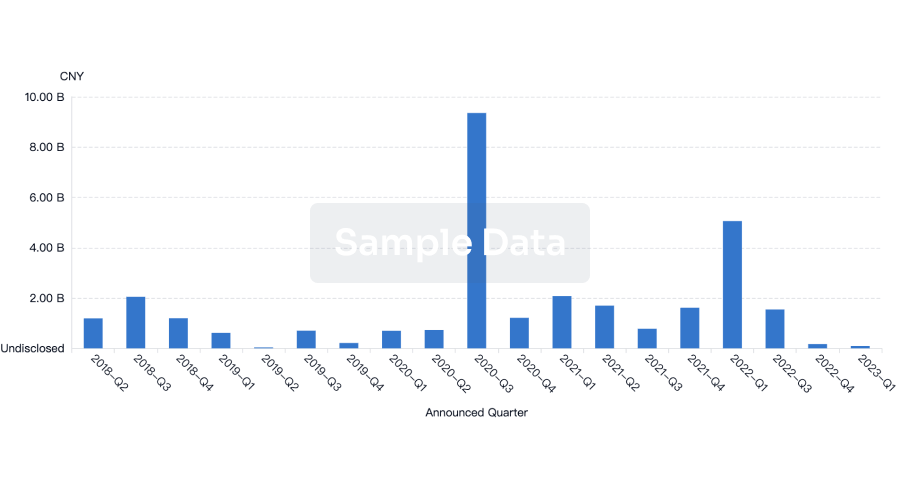Request Demo
Last update 17 Aug 2025

Neptune Medical, Inc.
Last update 17 Aug 2025
Overview
Related
3
Clinical Trials associated with Neptune Medical, Inc.NCT06935734
Colonoscopy With a Robotic Endoscope, The CARE I Study
This study is a prospective, single-arm, non-randomized, single site first-in-human study and will be conducted in two phases, where Phase A will serve to evaluate the safety of the Triton 4.0 System to perform screening, surveillance and diagnostic colonoscopies, and Phase B will evaluate the safety and efficacy of the Triton 4.0 System to perform screening, surveillance and diagnostic colonoscopies.
Start Date14 Apr 2025 |
Sponsor / Collaborator |
NCT06571760
Selective Pulmonary-artery Intervention to Reduce Acute Right-heart tEnsion-I
This study study is a prospective, single-arm, multicenter study to evaluate the safety and effectiveness of the Vertex Pulmonary Embolectomy System in participants presenting with clinical signs and symptoms of pulmonary embolism.
Start Date10 Sep 2024 |
Sponsor / Collaborator |
NCT06134687
Prospective Single Centre, Post Market, Randomized Controlled Trial to Demonstrate Feasibility, Safety and Efficacy, of a Novel Rigidizing Overtube in Colonic Endoscopic Submucosal Dissection
The goal of this prospective, single centre, 1:1, Post Market, randomized controlled, Investigator Initiated trial, is to compare the feasibility, safety efficacy, and clinical outcomes of colonic endoscopic submucosal dissection (ESD) utilizing a novel rigidizing overtube called Pathfinder® Endoscope Overtube (Neptune Medical, Burlingame California, USA) device in comparison to conventional ESD.
The research team hypothesize that with utilizing a novel rigidizing overtube the procedure time including dissection speed and closure time will be faster due to higher scope stability and greater control over the scope tip. Subsequently, the investigators anticipate lower immediate or delayed adverse events.
The research team hypothesize that with utilizing a novel rigidizing overtube the procedure time including dissection speed and closure time will be faster due to higher scope stability and greater control over the scope tip. Subsequently, the investigators anticipate lower immediate or delayed adverse events.
Start Date04 Jun 2024 |
Sponsor / Collaborator |
100 Clinical Results associated with Neptune Medical, Inc.
Login to view more data
0 Patents (Medical) associated with Neptune Medical, Inc.
Login to view more data
4
News (Medical) associated with Neptune Medical, Inc.19 Mar 2025
GTC 2025 — running March 17–21, 2025 in San Jose, California — has seen news about using artificial intelligence to advance autonomous imaging, surgical robotics, brain-computer interfaces, and more.
Nvidia itself announced Isaac for Healthcare, a developer framework for AI healthcare robotics. Nvidia said the domain-specific framework, which leverages three Nvidia computer systems, could enable developers to overcome challenges involving digital prototyping, training and evaluating AI models, collecting data and training for robotic policies, continuous testing of robotic systems, and creating deployment applications.
Here is the top medtech AI news involving Invidia’s Isaac for Healthcare and more that we’ve been covering on MassDevice this week:
GE HealthCare, Nvidia are working on autonomous imaging
GE HealthCare will expand its AI partnership with Nvidia to include autonomous X-ray and ultrasound applications. The goal is to address the radiology staff shortages burdening health systems by finding ways to automate more of what happens when people go in for scans. The initial focus of the partnership will involve developing an autonomous X-ray system that would automate repetitive tasks and perhaps even machine-to-patient interactions.
GE HealthCare will use Isaac for Healthcare to train, test, and tune autonomous ultrasound and X-ray devices in a virtual environment before actual deployment.
Read the full story
Virtual Incision to explore Nvidia AI tech for next-gen surgical robotics
Virtual Incision will explore using Nvidia Isaac for Healthcare to develop next-generation surgical robotics. The Lincoln, Nebraska–based company sees Isaac helping with surgical synthetic data generation to develop robotic task autonomy, as well as the creation of realistic simulation environments to improve surgical precision.
Find out more
Moon Surgical gets FDA nod for AI-enhancement for surgical robot
Moon Surgical announced yesterday that it received FDA clearance for ScoPilot, a Nvidia-enabled platform for its Maestro robotic surgical assistant. ScoPilot, enabled by Nvidia Holoscan, is a real-time sensing platform designed to develop and deploy applications based on AI in the OR.
“We’re excited for the release of NVIDIA Isaac for Healthcare which will help us add even more perceptive and intelligent capabilities to evolve the practice of surgery on our digital and AI native architecture,” Moon Surgical CEO Osdoit said in a news release. “Instead of training our AI using real OR data, we’ll be able to simulate various OR environments, use them to generate synthetic data via intra and perioperative experiences to ultimately train our AI to understand and interact with the physical world around it.”
Here’s more
Hyperfine, Nvidia partner on AI-powered neuroimaging
Hyperfine has entered into a strategic collaboration with Nvidia to leverage its AI expertise. The collaboration aims to apply Nvidia AI and accelerated computing to enhance Hyperfine’s portable imaging technology. According to Hyperfine, it could make brain magnetic resonance imaging (MRI) faster, smarter, and more affordable on a global scale. Guildford, Connecticut–based Hyperfine develops Swoop, the world’s first FDA-cleared, portable, ultra-low-field, brain MRI system. Hyperfine aims to leverage AI and machine learning to advance ultra-low-field portable MR brain imaging technology and improve patient care.
XCath says Isaac Healthcare is enabling innovation for its robotic system to treat strokes
XCath (Houston) announced that it uses Isaac for Healthcare to create comprehensive digital twins of its endovascular robot, treatment devices and human vasculature. The digital twins enable motion planning and control for autonomous navigation in its catheter-based robotic system.
Here’s XCath’s news release.
Synchron unveils cognitive AI foundational model for BCI developed with Nvidia
Synchron unveiled its roadmap to Chiral, a foundation model of human cognitions for its stent-based brain-computer interface (BCI) platform. New York-based Synchron wants to advance BCI from supervised to self-supervised learning. Through a collaboration with Nvidia, the company can accelerate the transition by combining large-scale neural data with advanced AI computing. Synchron built its BCI technology on the Nvidia Holoscan platform.
Find out more
Stereotaxis, Nvidia advance AI in endovascular surgical robotics
Stereotaxis announced that Nvidia accepted its surgical robotics technologies into its Nvidia Connect program.
“We greatly appreciate the support of Nvidia in our efforts to pioneer endovascular robotics and take the technology to new incredible heights,” said David Fischel, Stereotaxis chair & CEO. “The combination of robotics’ mechanistic benefits – precision, safety, stability – with the promise of AI innovations will dramatically transform what is possible in treating patients. We are excited for the path ahead of us.”
Here’s more
Neptune Medical to utilize Nvidia AI in GI robotic system
Neptune Medical will expand its collaboration with Nvidia to bring AI to its GI robotic system, with plans to leverage Isaac for Healthcare. Neptune has already been using Nvidia Omniverse and Isaac Sim to design and simulate robotic endoscopy to boost diagnostic capabilities.
Read the full story
Associate Editor Sean Whooley contributed to this story.
18 Mar 2025
BURLINGAME, Calif.--(BUSINESS WIRE)--Neptune Medical, a leader in medical device innovation, today announced an expansion of its collaboration with NVIDIA to further advance its GI Robotic System. The company will leverage NVIDIA Isaac for Healthcare, an AI robotics development platform specialized for healthcare, to enhance the AI-driven capabilities of its platform.
This deeper engagement aligns with NVIDIA’s focus on physical AI—a transformative wave of AI that enables autonomous medical devices to sense, plan, and execute complex tasks in real-world environments. By integrating Isaac for Healthcare, Neptune Medical gains access to an advanced digital twin framework, enabling physically accurate and high-fidelity simulations of sensors, human anatomy, and physiological processes essential for medical innovation.
“Building the next generation of intelligent GI robotics requires robust AI-driven simulation,” said Alex Tilson, Founder and CEO at Neptune Medical. “By utilizing NVIDIA Isaac for Healthcare, we can accelerate the development, validation, and commercialization of our GI robotic systems with highly enabling capabilities, ensuring that they operate with unparalleled precision and safety in real-world settings.”
About Neptune Medical
Neptune Medical is at the forefront of developing advanced medical devices, with a primary focus on gastrointestinal robotics. The company's mission is to enhance patient outcomes through innovative technology and collaborative partnerships.
18 Nov 2024
Balancing catheter flexibility and stiffness has long vexed device designers and engineers trying to access the human anatomy’s innermost reaches.
The solution might be a promising new technology originally developed for endoscopy at Neptune Medical, founded by Alex Tilson in 2014.
His first hire was Garret Gomes, who’s now VP of product development at Jupiter Endovascular, which spun out of Neptune to advance the technology in the form of the Vertex pulmonary embolectomy system.
Jupiter Endovascular received FDA investigational device exemption for the large-bore aspiration system in August 2024 and reported the first human cases in September, followed by the first U.S. case in October.
To remove a pulmonary embolism with a minimally invasive catheter approach (rather than an open pulmonary thromboendarterectomy), a physician starts in the femoral vein and twists and turns up through the right atrium, then the right ventricle and into the pulmonary artery. That’s a journey through two heart valves and chambers in a delicate organ that’s already stressed by the blocked outflow, which causes high blood pressure and enlarges the heart.
“Pushing current large-bore, stiff catheters through that heart distorts the anatomy, and it’s very difficult to control, so we saw that as just very ripe for this technology, for our solution,” Gomes said.
Gomes discussed the complicated transcatheter pulmonary embolectomy workflow his team hopes to simplify with Vertex.
“Right now, there’s multiple guidewire exchanges to get these stiff catheters in,” he said. “You have to start with a soft-wire guide catheter, s out for a stiff wire, take out the guide catheter, put the catheter in, and then try to do some work, and then you might lose position. Then you have to go to a different location, you have to do that whole s. And every time you’re doing this, you know you’re putting stress on the heart. We have designed [Vertex] to have fewer guide wire swaps, to have fewer device swaps, and to just be a very reliable system.”
How Jupiter Endovascular’s Vertex system works
While Gomes said it’s too early to discuss the “secret sauce” behind the technology in depth, he offered some details about how the Vertex system works.
“There are two states to the catheter,” Gomes said. “It’s in a relaxed state initially, it’s very flexible and designed to track directly over a guidewire. Once it’s in position or whatever the physician wants, they can activate it. Activating it to transition it from the relaxed state to the fixed state is done with a simple locking insufflator and saline.”
The device uses the same type of insufflator used for angioplasty balloons, which means there’s no capital equipment, no energy being delivered to the system, and no complicated handles or user interface.
When activated, the pressure is “fully contained within the walls of the catheter,” he said.
“There’s no expansion — or meaningful expansion — of the device. It doesn’t change shape, elongate, shorten,” he said. “It locks in place, and then when you’d like to move the catheter, you just unlock it, depressurize it, and move the catheter, and then go again. You can go back and forth many, many times.”
The system doesn’t use unique materials or advanced manufacturing techniques in a new way, Gomes said. The catheter is made of low-durometer elastomers and stainless steel wire, employing traditional catheter manufacturing techniques for wire- and braid-reinforced tubes.
“The way that we put it together, the exact material selection is special,” he said. “But that’s all I can share at this time. … Our advances are we made this simple to activate, simple to operate, and part of that is not using things that require high energy or exotic materials. This needs to be a catheter that can scale with volume, especially as we’re thinking about other applications beyond PE. That might be smaller diameter, that might be higher volume and more price sensitive, so we’ve gone in with a technology that is highly scalable.”
What’s next for Jupiter Endovascular’s technology?
Gomes declined to discuss other potential applications beyond pulmonary embolism — for now.
“Being an innovation-driven startup, we always have irons in the fire, something that has led to where we’re at now. … It’s always difficult to balance today and three years from now, especially as a startup, but we force ourselves to do that. We have lots of different projects in the works, and we aren’t disclosing those right now. It’s just trying to figure out the right fit. We found the perfect fit in PE for the reasons I stated. And now we’re trying to find where else is this most needed. We don’t want to just force this into any procedure. And as it was with PE, it’s not just about this catheter. It’s about the procedure itself. So if this catheter might be good for that procedure, we need to work on the full solution for that.”
But there’s more to come, Gomes said.
“With this new technology, we’ve had a lot of theories about what can be done. And now we’re seeing what actually can be done and we’re finding things that we didn’t even think of. That’s extremely exciting. It’s going to be incredible to see what limits we can push and what utility we can provide, not just to PE but to other procedures. Once we have this level of access and control, the doors open in terms of what can you do, what sorts of therapies were previously inconceivable because the amount of work that you had to do, the amount of loads that you needed to put on the system, amount of stuff that you need to deliver to a location. It just couldn’t fit, you know, it couldn’t, couldn’t get there. And so our vision goes well beyond PE, well beyond delivering a stent better.”
“The phrase ‘revolutionize endovascular medicine,’ everyone wants to do that, everyone says that,” he continued. “But in this case, we’re delivering a completely new toolset, completely new capabilities to physicians, that have already unlocked their creativity and what they want to do. We’ve got a long future ahead of us.”
We’ll have more from our interview with Gomes in the coming weeks. Subscribe to our free email newsletter to make sure you don’t miss it.
100 Deals associated with Neptune Medical, Inc.
Login to view more data
100 Translational Medicine associated with Neptune Medical, Inc.
Login to view more data
Corporation Tree
Boost your research with our corporation tree data.
login
or

Pipeline
Pipeline Snapshot as of 23 Aug 2025
No data posted
Login to keep update
Deal
Boost your decision using our deal data.
login
or

Translational Medicine
Boost your research with our translational medicine data.
login
or

Profit
Explore the financial positions of over 360K organizations with Synapse.
login
or

Grant & Funding(NIH)
Access more than 2 million grant and funding information to elevate your research journey.
login
or

Investment
Gain insights on the latest company investments from start-ups to established corporations.
login
or

Financing
Unearth financing trends to validate and advance investment opportunities.
login
or

AI Agents Built for Biopharma Breakthroughs
Accelerate discovery. Empower decisions. Transform outcomes.
Get started for free today!
Accelerate Strategic R&D decision making with Synapse, PatSnap’s AI-powered Connected Innovation Intelligence Platform Built for Life Sciences Professionals.
Start your data trial now!
Synapse data is also accessible to external entities via APIs or data packages. Empower better decisions with the latest in pharmaceutical intelligence.
Bio
Bio Sequences Search & Analysis
Sign up for free
Chemical
Chemical Structures Search & Analysis
Sign up for free
